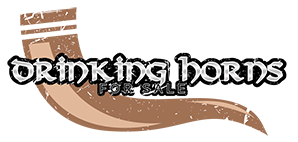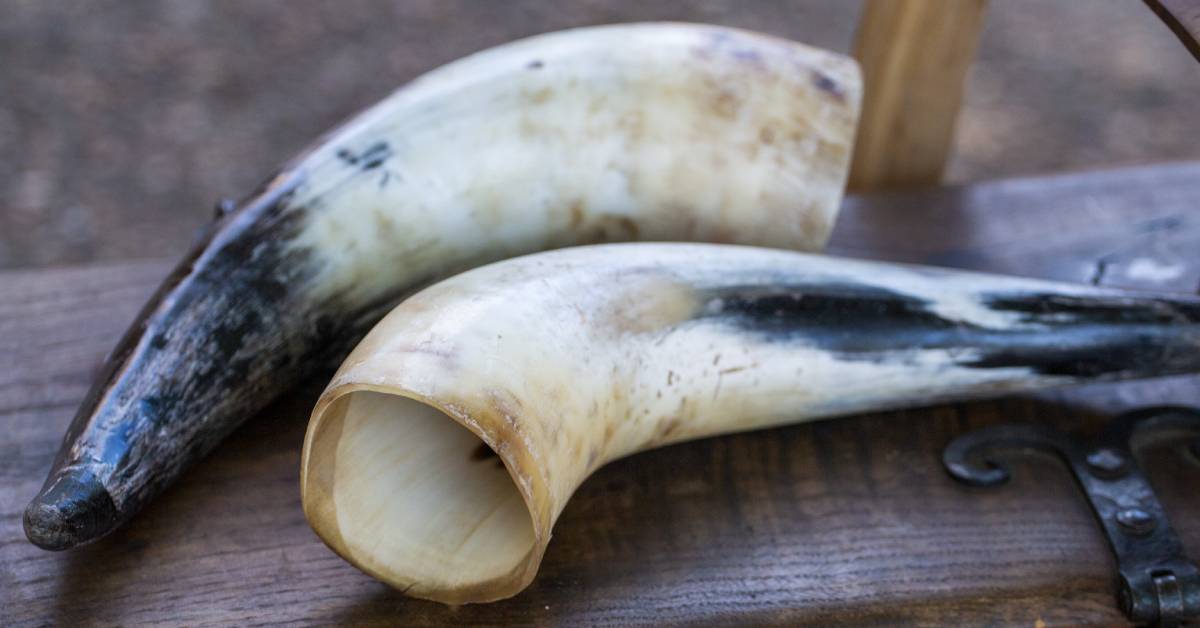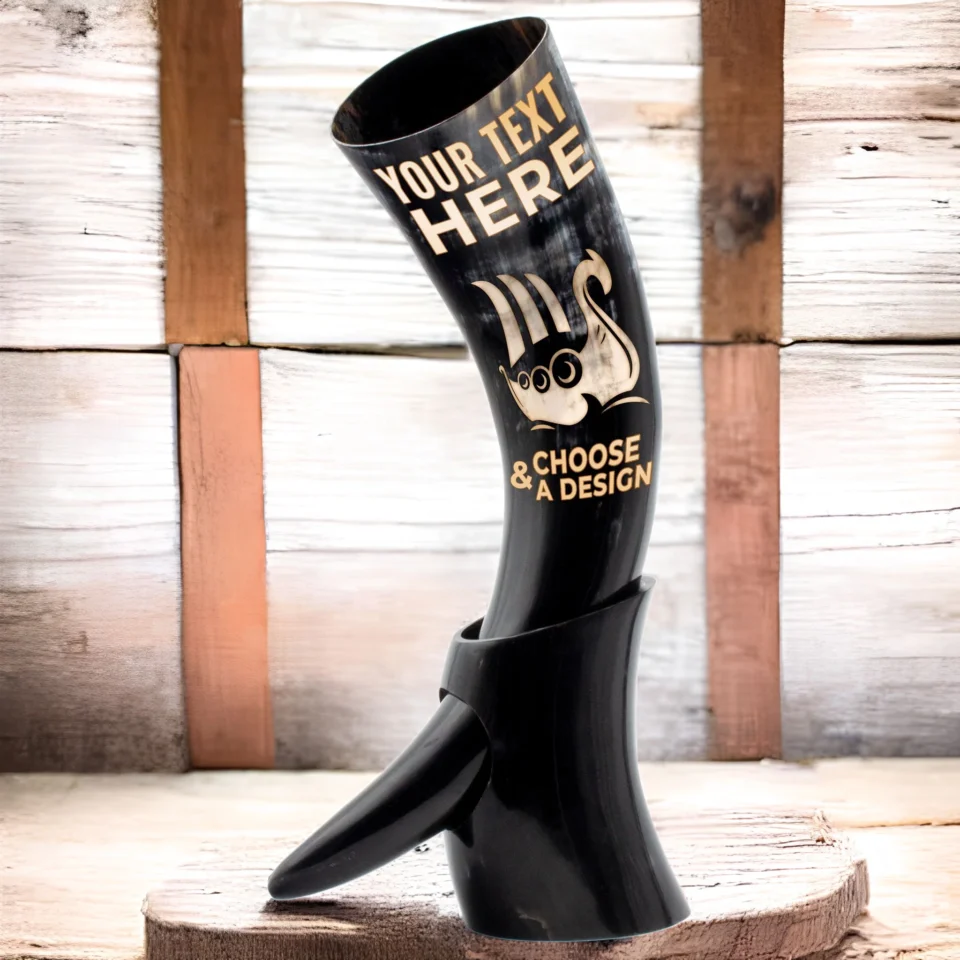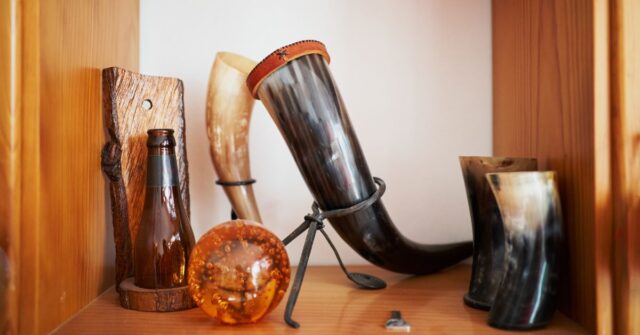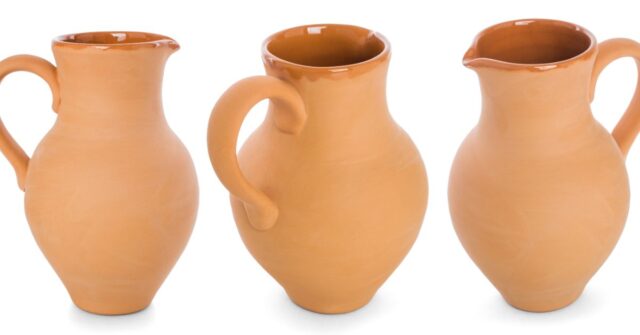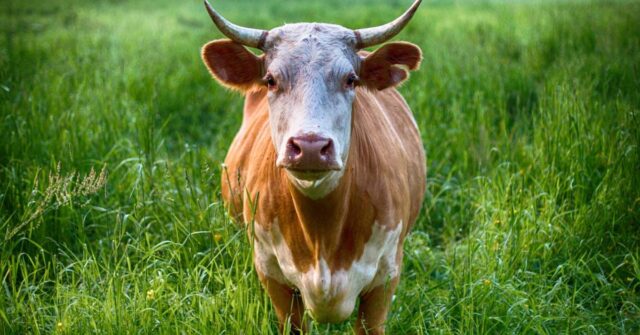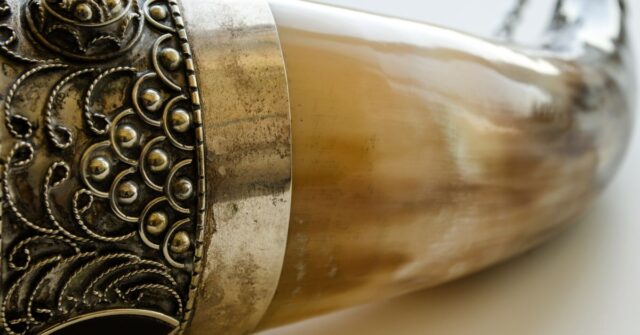The ceremonial use of drinking horns is deeply rooted in history, crossing numerous cultures and countless centuries.
This article aims to contrast the unique characteristics of carved and plain drinking horns, discussing their aesthetic appeal, functionality, and cultural significance.
We will look into their construction process, personalization options, and contemporary uses. Join us as we delve into the fascinating world of drinking horns.
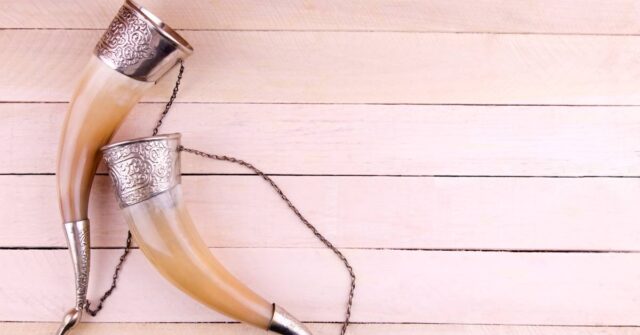
Introduction
Drinking horns, used for consuming alcoholic beverages, have been a significant part of global cultures, particularly within tribes of the ancient era.
They serve not only a practical function but also act as a symbol of social standing. This article offers a comparative analysis of carved and plain drinking horns, their distinct features, and their significance throughout history.
Understanding Drinking Horns: Historical Context
Drinking horns, by nature, are steeped in history. Let’s embark on a journey back in time to understand their origins and evolution, highlighting the difference between plain and carved varieties in this context.
The Significance of Drinking Horns in Various Cultures
Drinking horns were prominent symbols of power and nobility in numerous ancient cultures, including the Greeks, Romans, and Norsemen.
The nature of the decorations on these horns often indicated the rank of the owner. Carved horns, intricately decorated, were typically owned by those of high status, while plain ones were more common among the masses.
Origin and Evolution of Drinking Horns
Drinking horns trace their roots back to the Iron Age, though their popularity peaked in the Medieval period.
Initially, they were plain, but as societies progressed, craftsmen began to carve and adorn them with various themes, often related to mythology, battles, and spirituality.
This evolution brought about a differentiation between plain and carved drinking horns.
Materials and Manufacturing Processes
The making of drinking horns is an art form that requires particular materials and processes. The following section will compare the manufacturing techniques of plain and carved drinking horns.
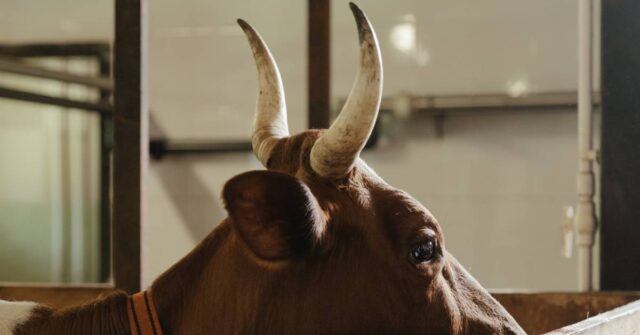
Typical Materials Used in the Construction of Drinking Horns
Drinking horns are primarily made from the horns of bovine species like cattle or buffalo. For carved versions, materials for decoration can range from simple pigments for color to precious metals and gems for the more extravagant pieces.
Manufacturing Processes for Plain Drinking Horns
The creation of a plain drinking horn begins with the careful selection of a suitable horn. The horn is then cleaned, heated, and molded into the desired shape.
The inside is polished and coated with a safe sealing material to make it suitable for drinking.
Manufacturing Processes for Carved Drinking Horns
The making of a carved drinking horn involves additional steps. After the initial cleaning and shaping, artisans meticulously carve designs into the horn’s surface.
The complexity of the carvings can vary significantly, affecting the overall time and effort required for the horn’s completion.
Detailed Analysis: Plain Drinking Horns
Plain drinking horns have their unique features and benefits. This section will provide an in-depth analysis of these characteristics, as well as the potential drawbacks of choosing a plain drinking horn.
Characteristics of Plain Drinking Horns
Plain drinking horns tend to showcase the natural beauty of the horn. They are smooth, with the color and texture variations of the original horn being their primary aesthetic feature.
They are also typically more lightweight and less delicate than their carved counterparts.
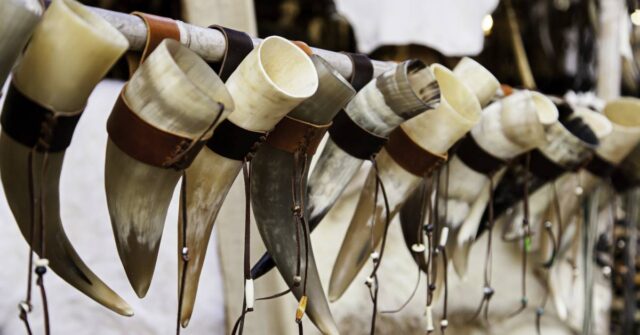
Advantages of Plain Drinking Horns
The simplicity of plain drinking horns is their key advantage. They are sturdy, less likely to be damaged, and easy to clean.
They are also generally more affordable than carved horns, making them a more accessible choice for many people.
Disadvantages of Plain Drinking Horns
The main disadvantage of plain drinking horns is their lack of decorative appeal compared to carved versions.
They might not be the first choice for those who appreciate intricate designs and historical authenticity in their drinking vessels.
Detailed Analysis: Carved Drinking Horns
Carved drinking horns are remarkable pieces of art, each one unique and imbued with history and cultural significance. This section offers a detailed review of their characteristics, advantages, and potential disadvantages.
Characteristics of Carved Drinking Horns
Carved drinking horns feature intricate designs on their surfaces, reflecting various themes, from mythological creatures and epic scenes to intricate geometric patterns.
They often possess a tactile appeal, with the carvings adding a sense of depth and texture.
Common Themes in Horn Carvings
The themes of horn carvings vary widely based on cultural and personal significance.
Nordic and Celtic carvings often feature mythical creatures and gods, while geometric patterns are common in Islamic and African designs. Personal crests and emblems are also popular themes in custom-made pieces.
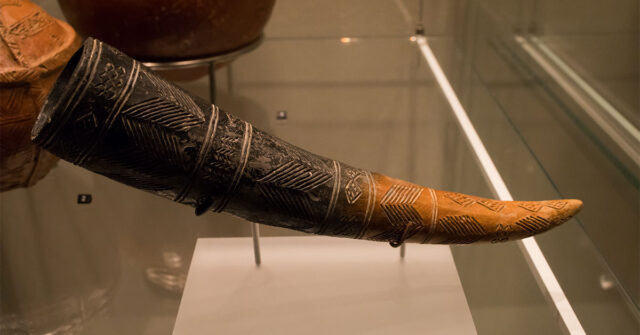
Advantages of Carved Drinking Horns
Carved drinking horns are much more than simple drinking vessels – they are pieces of art. The unique and intricate designs make them appealing as display pieces.
Additionally, they often serve as conversation starters due to their historical and cultural significance.
Disadvantages of Carved Drinking Horns
Carved horns, while aesthetically pleasing, can be more delicate than plain ones. Detailed carvings can make them more prone to damage and harder to clean.
Also, the level of craftsmanship involved generally makes them more expensive than plain versions.
Comparison of Plain and Carved Drinking Horns
Having explored the individual characteristics of plain and carved drinking horns, it’s time to draw some comparisons.
This section will look at the aesthetic, functional, and durability differences between the two, as well as discuss the justifications for the price disparity.
Comparative Aesthetics
While plain horns rely on their natural look for appeal, carved horns gain their aesthetic value from the skill and creativity of the artisan. The decision between the two is often a matter of personal preference.
Comparative Functionality
Both types of drinking horns serve the primary function of holding liquids, with no significant difference in this regard. However, carved horns, due to their elaborate designs, often double as decorative pieces.
Comparative Durability and Care
Plain drinking horns tend to be more durable and easier to maintain due to their simplicity. Carved horns, with their intricate details, require more careful handling and cleaning to preserve their designs.
Price Differences and Their Justification
Carved horns generally command higher prices than plain ones, a reflection of the extra time, effort, and skill required for their creation. The uniqueness and artistic value of carved horns further justify their higher cost.
Personalization and Customization Options
Drinking horns, particularly carved ones, offer a wide range of personalization options. This section will delve into how both types of horns can be customized to suit individual preferences.
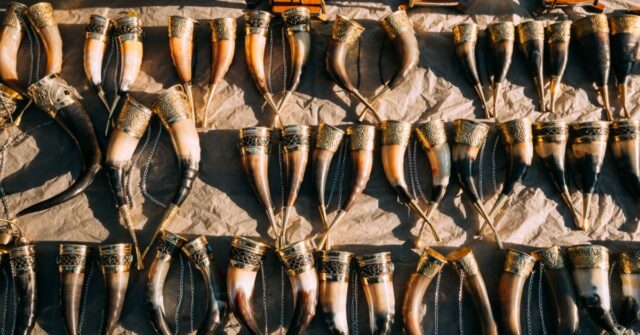
Personalizing Plain Drinking Horns
Plain drinking horns can be personalized in various ways, from choosing the size and shape of the horn to adding leather wraps or metal accents. Engravings of names or initials are also a popular personalization option.
Personalizing Carved Drinking Horns
The possibilities for personalizing carved drinking horns are even more extensive. Along with the options available for plain horns, one can also choose the themes and specific designs for the carvings, making each piece a unique work of art.
Modern Uses and Significance
Drinking horns continue to hold cultural significance in the modern world. This section will explore their current uses and roles in popular culture and modern festivities.

Drinking Horns in Popular Culture
Drinking horns have seen a resurgence in popularity, in part due to their appearances in popular culture. They feature prominently in movies, TV series, and games, particularly those with historical or fantasy themes.
Drinking Horns in Modern Rituals and Festivities
Today, drinking horns are commonly used in traditional weddings, renaissance fairs, and historical reenactments. They serve as a connection to our past and add a unique touch to modern celebrations.
Conclusion
Whether plain or carved, drinking horns carry an allure that transcends their practical use. They are a connection to our ancestors, an art form, and a way to make a statement.
The choice between a plain and a carved drinking horn comes down to personal preference and the value placed on artistry, history, and cultural significance.
